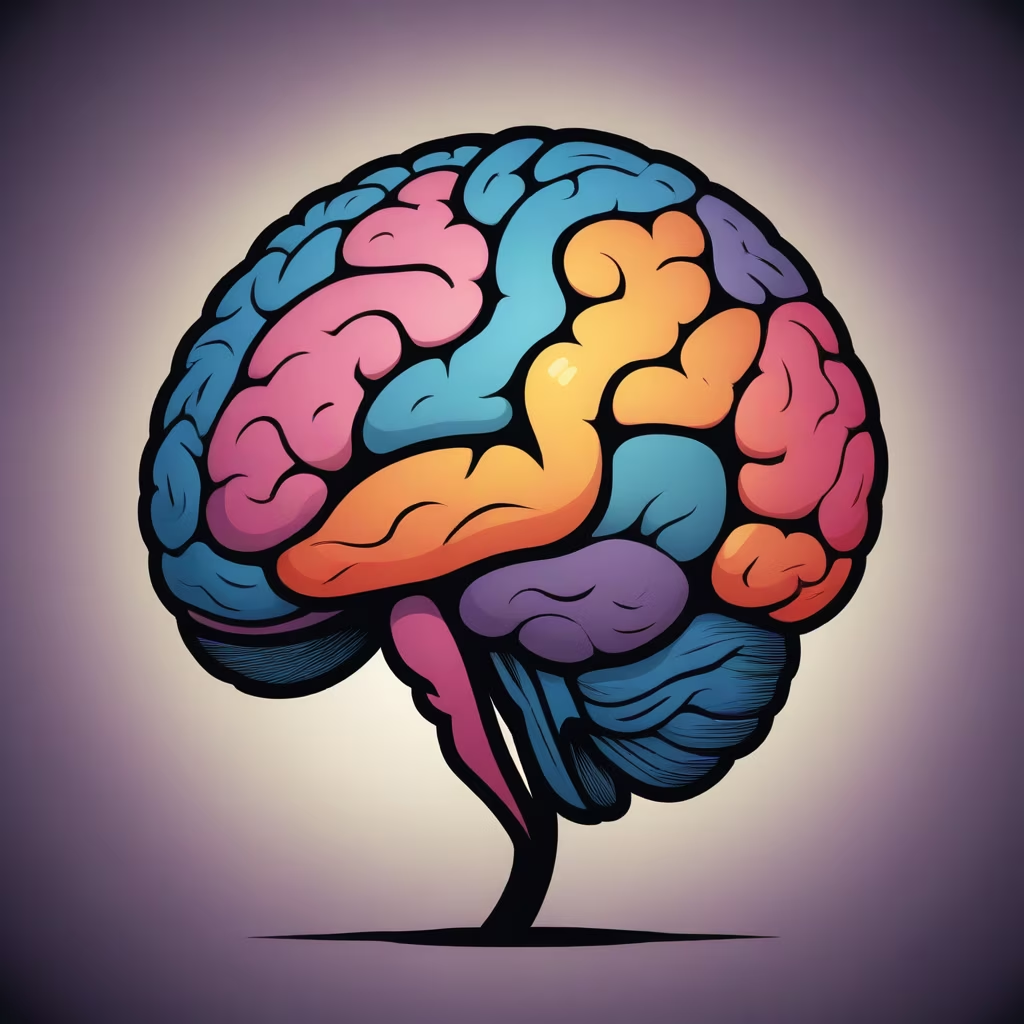Prompt: Certainly! Here's a description of a simplified line drawing of a profile view of the brain, including its complete structure, with labels for the following five parts: 1. Brainstem, 2. Cerebellum, 3. Limbic System, 4. Basal Ganglia, and 5. Cerebral Cortex. The background color is white, and the drawing will be created using simple lines and the stable diffusion technique. The profile view of the brain features a clean and minimalist white background. The drawing technique employed involves simple lines that outline the various structures of the brain, combined with the subtle texture of stable diffusion. Here are the labeled parts: Brainstem: The brainstem is clearly labeled, positioned at the base of the brain. It is represented by a straight vertical line, indicating its central location within the brain. Cerebellum: Adjacent to the brainstem, the cerebellum is labeled and depicted as a smaller, curved line beneath the brainstem. Its distinctive shape is captured, showcasing its role in motor coordination and balance. Limbic System: The labeled limbic system is represented by a curved line that encircles the innermost region of the brain. While simple, this line suggests the presence of the hippocampus, amygdala, and hypothalamus, which collectively form the limbic system and regulate emotions, memory, and basic physiological functions. Basal Ganglia: Another labeled component, the basal ganglia, is represented by a series of small interconnected lines near the cerebral cortex. These lines indicate the presence of the caudate nucleus, putamen, and globus pallidus, which form the basal ganglia and play a role in motor control. Cerebral Cortex: The labeled cerebral cortex is depicted with a series of wavy lines that cover the upper portion of the brain. These lines represent the outer layer of the brain and suggest the presence of the frontal, parietal, temporal, and occipital lobes, which constitute the cerebral cortex responsible for higher cognitive functions. By utilizing simple lines and the stable diffusion technique, this profile view drawing of the brain with labeled parts on a white background offers a minimalist representation of the brain's structure.






Prompt: Here's a description of a profile view of the brain, including its complete structure, with labels for the following five parts: 1. Brainstem, 2. Cerebellum, 3. Limbic System, 4. Basal Ganglia, and 5. Cerebral Cortex. The background color is white, and the painting technique used is stable diffusion. The profile view of the brain showcases its remarkable structure, painted using stable diffusion on a pristine white background. Let's explore the labeled parts in detail: Brainstem: Positioned at the base of the brain, the brainstem is prominently labeled. It comprises the medulla oblongata, pons, and midbrain. These vital structures regulate essential functions such as breathing, heart rate, and consciousness. Cerebellum: Adjacent to the brainstem, the cerebellum is labeled and stands out with its distinctive texture and shape. This structure is responsible for coordinating movement, balance, and posture. Its intricate folds and lobes add depth and visual interest to the artwork. Limbic System: The labeled limbic system is located deep within the brain. It includes several structures, such as the hippocampus, amygdala, and hypothalamus. This system is associated with emotions, memory, and the regulation of basic physiological functions. Basal Ganglia: Another labeled component of the brain is the basal ganglia, situated at the base of the cerebral cortex. It comprises several interconnected nuclei, including the caudate nucleus, putamen, and globus pallidus. The basal ganglia plays a crucial role in motor control and the coordination of movement. Cerebral Cortex: The labeled cerebral cortex covers the outermost layer of the brain and is responsible for higher cognitive functions. It is divided into distinct lobes, including the frontal, parietal, temporal, and occipital lobes. The cerebral cortex is intricately folded, showcasing its vast surface area.




Prompt: The brain is depicted in a profile view, showcasing its intricate and interconnected structures. The background is a pristine white, providing a clean canvas for the artwork. The painting technique employed is stable diffusion, which adds a unique texture and depth to the image. Starting from the top, the cerebral cortex is prominently displayed, exhibiting its convoluted folds and distinct lobes. It showcases the frontal lobe, responsible for executive functions and decision-making, followed by the parietal lobe, associated with sensory perception and spatial awareness. The temporal lobe, involved in memory and auditory processing, extends gracefully beneath the parietal lobe. Moving further down, the occipital lobe reveals itself, dedicated to visual processing and interpretation. Its distinct contours and intricate neural pathways create an eye-catching visual element. Adjacent to the occipital lobe, the cerebellum, known for its role in motor coordination and balance, adds a sense of symmetry to the composition. The brainstem, positioned below the cerebellum, emerges as a vital connector between the brain and the spinal cord. Its medulla oblongata, pons, and midbrain are discernible, each playing crucial roles in autonomic functions, sensory relay, and motor control. The stable diffusion painting technique adds subtle gradients of color, emphasizing the connectivity and complexity of the brain's neural networks. Delicate shades of blue, green, and purple blend seamlessly, representing the dynamic nature of neural activity within the brain. Overall, the profile view of the brain, painted using stable diffusion on a white background, captures the beauty and intricacy of this remarkable organ, inviting viewers to appreciate its awe-inspiring structure and functionality.








Prompt: The brain is depicted in a profile view, showcasing its intricate and interconnected structures. The background is a pristine white, providing a clean canvas for the artwork. The painting technique employed is stable diffusion, which adds a unique texture and depth to the image. Starting from the top, the cerebral cortex is prominently displayed, exhibiting its convoluted folds and distinct lobes. It showcases the frontal lobe, responsible for executive functions and decision-making, followed by the parietal lobe, associated with sensory perception and spatial awareness. The temporal lobe, involved in memory and auditory processing, extends gracefully beneath the parietal lobe. Moving further down, the occipital lobe reveals itself, dedicated to visual processing and interpretation. Its distinct contours and intricate neural pathways create an eye-catching visual element. Adjacent to the occipital lobe, the cerebellum, known for its role in motor coordination and balance, adds a sense of symmetry to the composition. The brainstem, positioned below the cerebellum, emerges as a vital connector between the brain and the spinal cord. Its medulla oblongata, pons, and midbrain are discernible, each playing crucial roles in autonomic functions, sensory relay, and motor control. The stable diffusion painting technique adds subtle gradients of color, emphasizing the connectivity and complexity of the brain's neural networks. Delicate shades of blue, green, and purple blend seamlessly, representing the dynamic nature of neural activity within the brain. Overall, the profile view of the brain, painted using stable diffusion on a white background, captures the beauty and intricacy of this remarkable organ, inviting viewers to appreciate its awe-inspiring structure and functionality.


Prompt: Year:1962. Formal portrait. High detail, Canon EOS DSLR photograph. UHD, 8K resolution, sharp focus, full color, intimate, intricately detailed and extreme close up facial portrait of a fashionable age 29 wife in 1962, showcasing her generously and profusely highlighted blonde hair. She coyly smirks at the camera. Her very thick, softly textured hair fills the viewing screen and is delicately styled in a very large, loose, very tall, very lofty, very highly voluminous bouffant. She has subtle, elegant makeup. Solid, light colored background. Accurate 1962 styling.
Negative: (earrings: 1.6) jewelry, hair beyond camera view, cropped hair, tiara, orange colors, black and white image, nudity, NSFW,
Style: Photographic






Prompt: An infographic with 5 brain icons showing accurate relative sizes representing brain development from ages 1 to 5. At age 1, draw the smallest brain sized to 25% of adult brain size. At age 2, draw a brain 2 times as large as the 1 year old brain. At age 3, draw a brain 3 times as large as the 1 year old brain. At age 4, draw a brain 3.6 times as large as the 1 year old brain. At age 5, draw the largest brain 6 times as large as the 1 year old brain. Show the percentage below each brai










Prompt: An infographic with 5 brain icons showing accurate relative sizes representing brain development from ages 1 to 5. At age 1, draw the smallest brain sized to 25% of adult brain size. At age 2, draw a brain 2 times as large as the 1 year old brain. At age 3, draw a brain 3 times as large as the 1 year old brain. At age 4, draw a brain 3.6 times as large as the 1 year old brain. At age 5, draw the largest brain 6 times as large as the 1 year old brain. Show the percentage below each brain

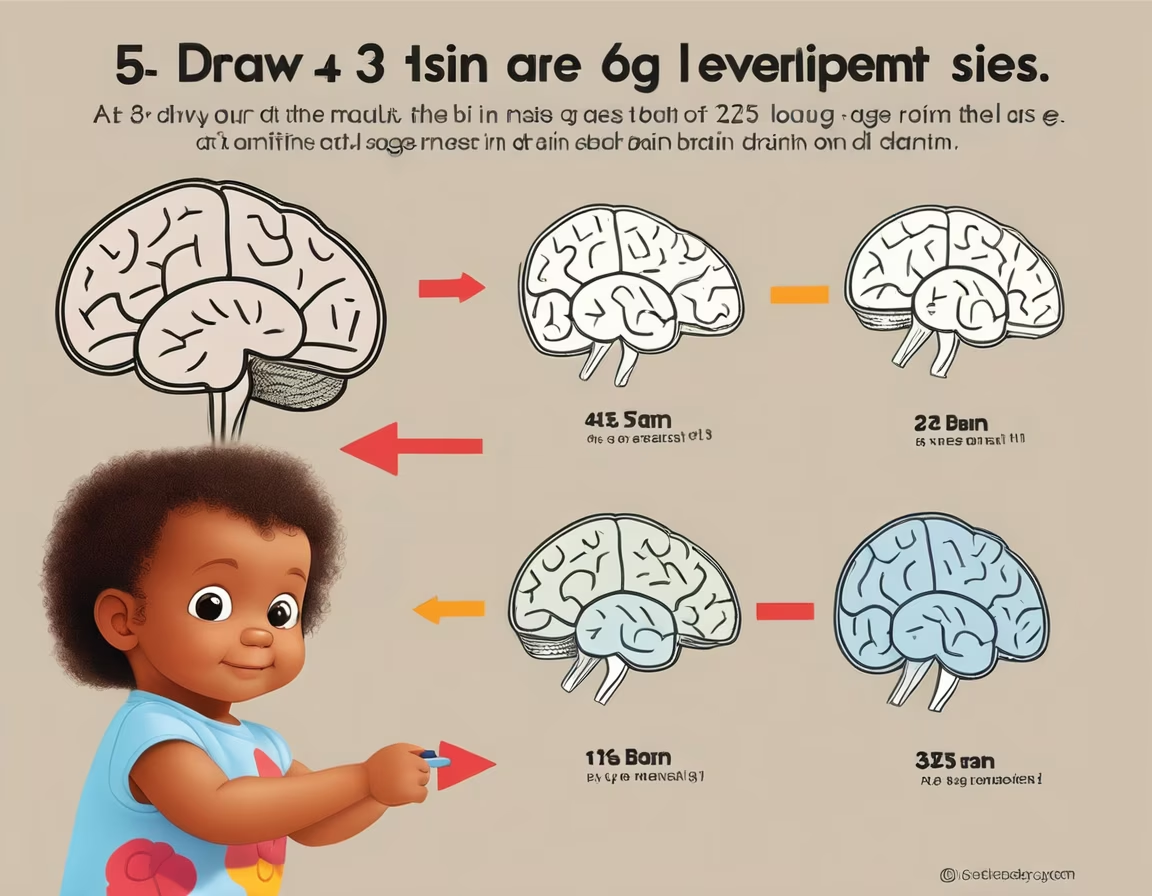
Prompt: An infographic with 6 brain icons representing brain development from ages 1 to 6. At age 1, draw a small brain sized to 70% of adult brain. At age 2, draw a slightly bigger brain sized to 75% of adult brain. At age 3, draw a brain sized to 80% of adult brain. At age 4, draw a brain sized to 85% of adult brain. At age 5, draw a brain sized to 90% of adult brain. At age 6, draw a brain sized to 95% of adult brain. Show the exact percentage below each brain image. Use a clean minimalist style.




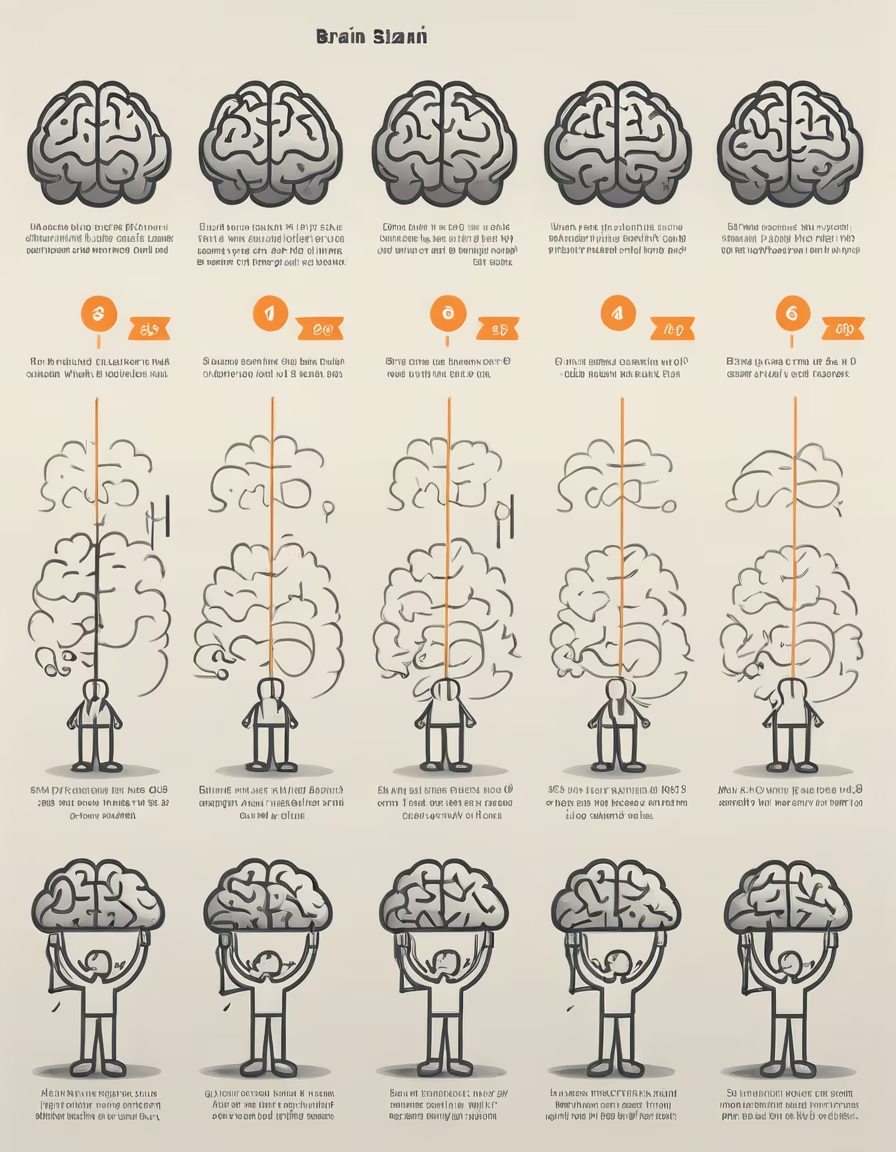



Prompt: Concept of the human brain, one part of the brain in black and white, other part in rainbow colour, 16k ultra high resolution, very sharp, ultra high detailed, high saturated image
Style: Line Art

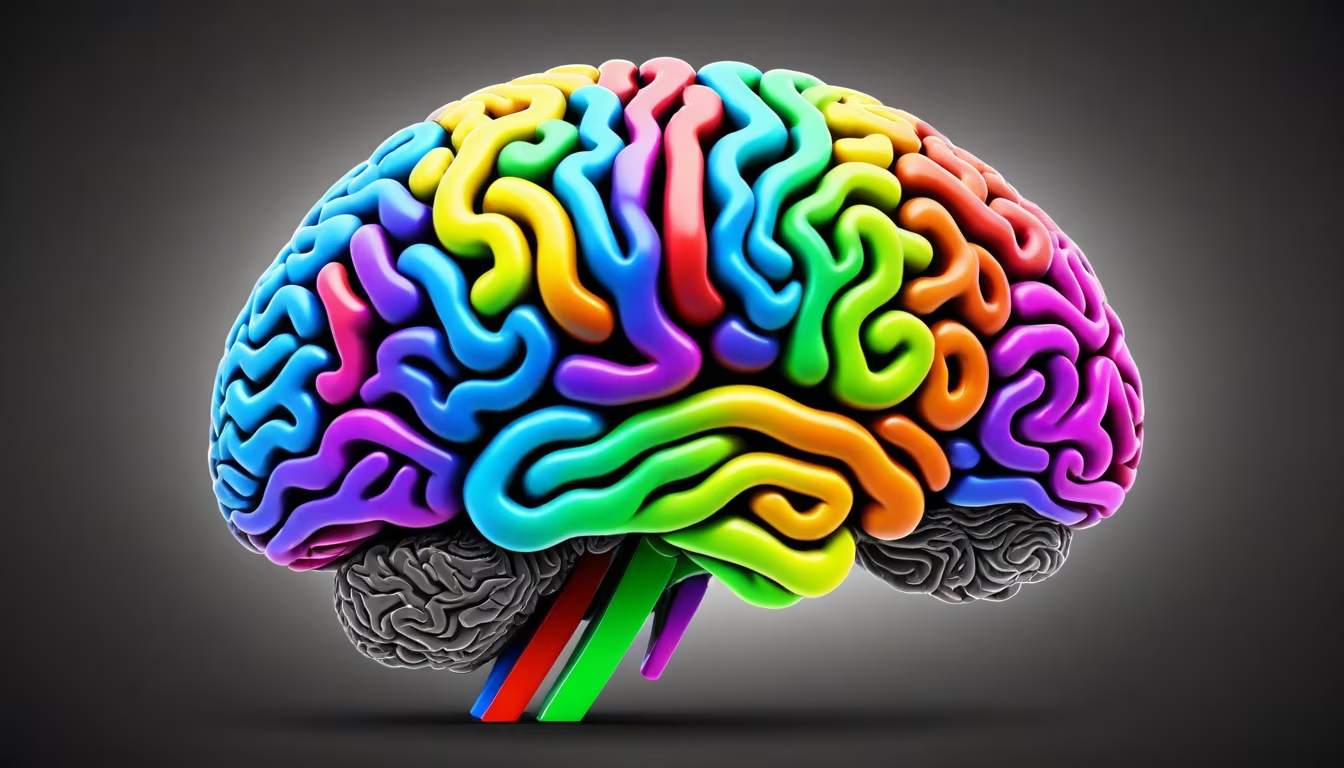
Prompt: human brain, one line arrt, based on the color #03feb2, white background, style: one linee art, format: still negative: human face
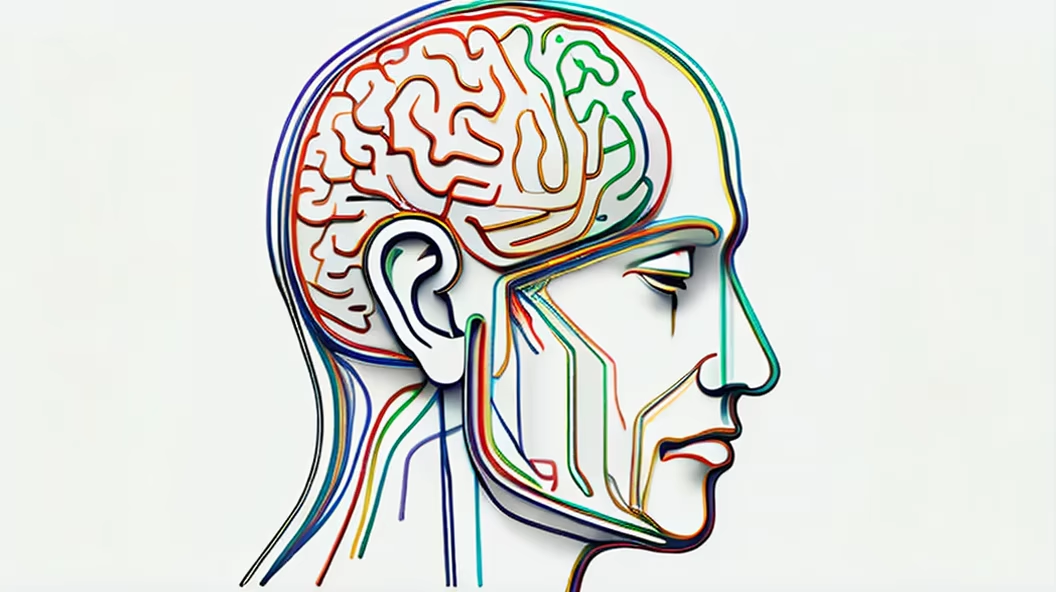
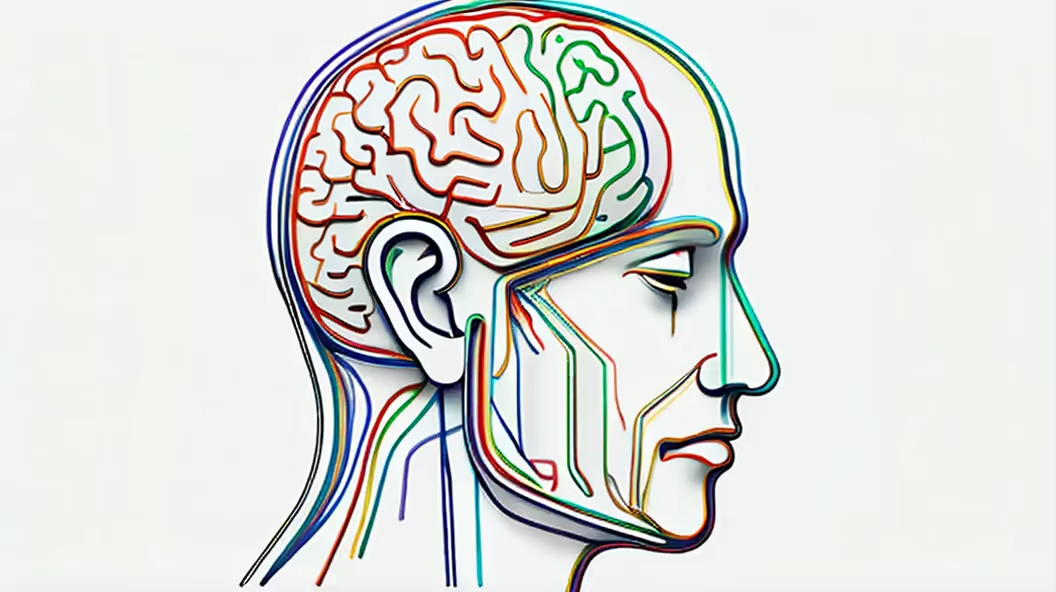
Prompt: The side profile of a person's head, a simple drawing, without details of the facial features, only the outer outline, with white strokes. The shape of the brain is a complete pickleball, which does not overlap with the edge of the avatar. The pickleball is orange and round, with 6-7 small holes on it and a white outline. Pictures, HD
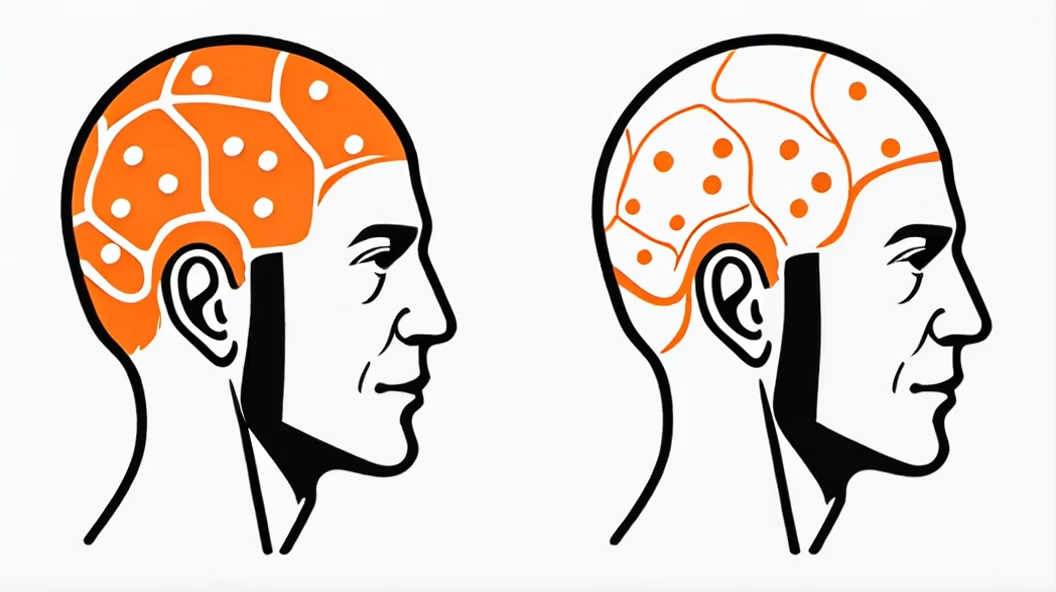


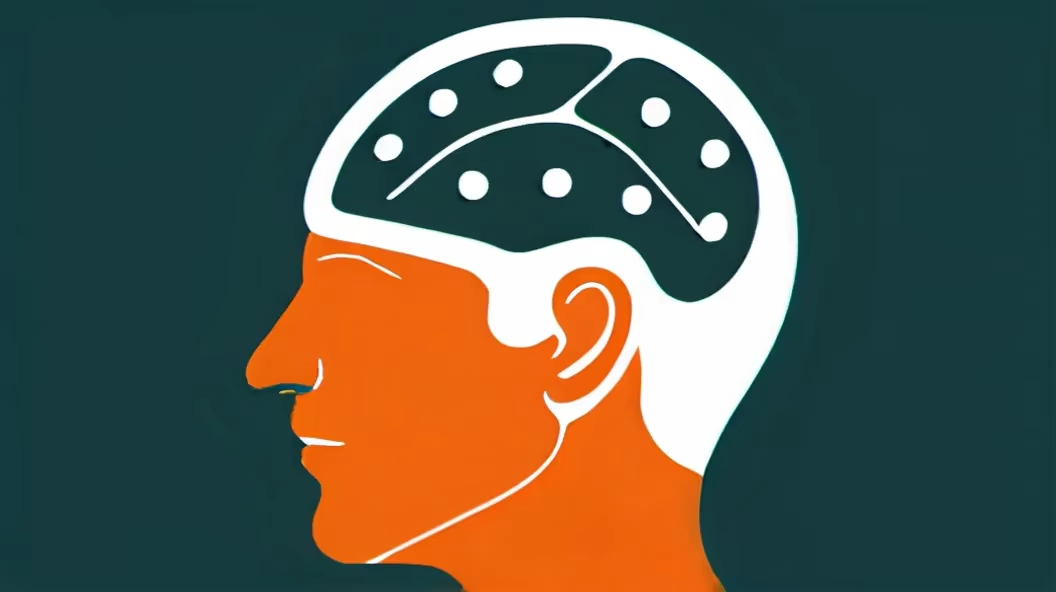
Prompt: The side profile of a person's head, a simple drawing, does not need to reflect the details of the facial features, only the outer outline and white strokes. The shape of the brain is a complete pickleball, which does not overlap with the edge of the avatar. The pickleball is orange and round, with 6-7 small holes on it and a white outline. Pictures, HD
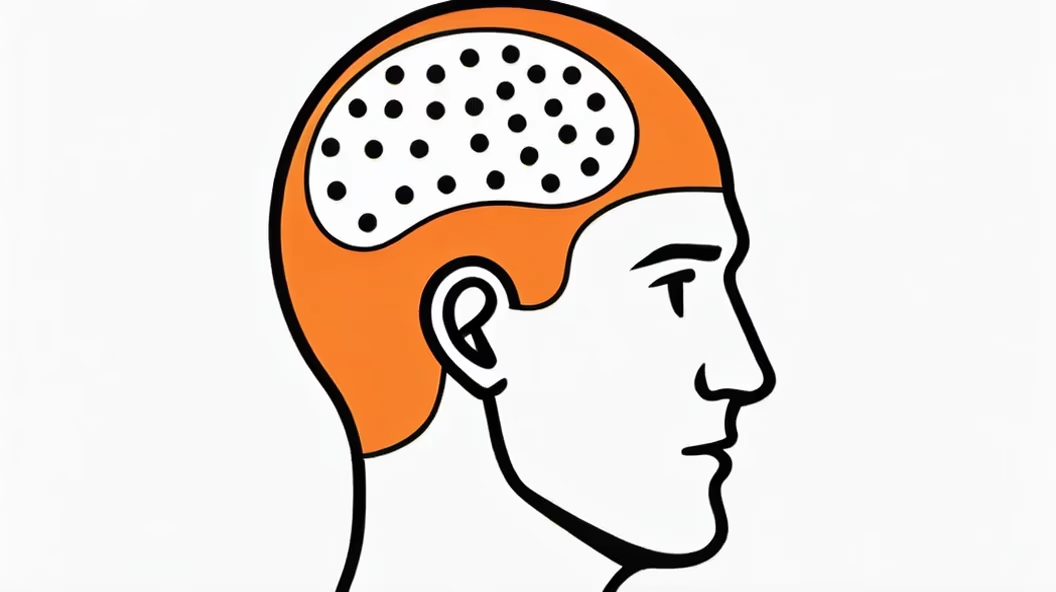

Prompt: Design a profile view logo featuring a digital brain, with half of its structure made up of circuits and surrounded by documents, 2d










Prompt: The logo incorporates a simplified representation of a brain, giving it a clean and minimalistic look. Surrounding the brain, futuristic lines and shapes form a protective shield, symbolizing the AI support provided by the app. To infuse entertainment, small icons representing various forms of entertainment, such as a camera, headphones, or a popcorn bucket, can be placed around the brain.
Style: Line Art


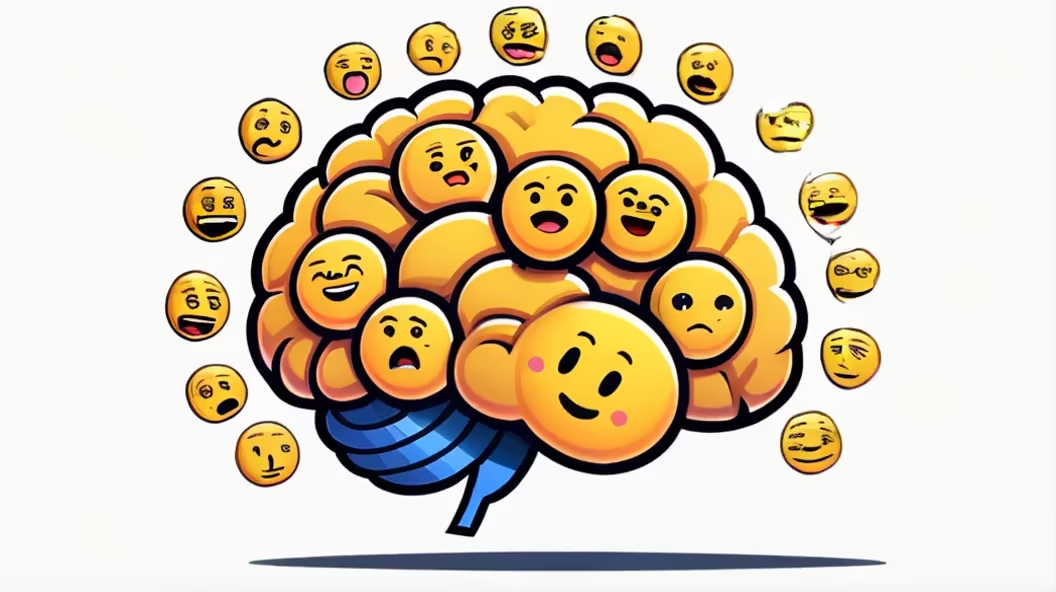
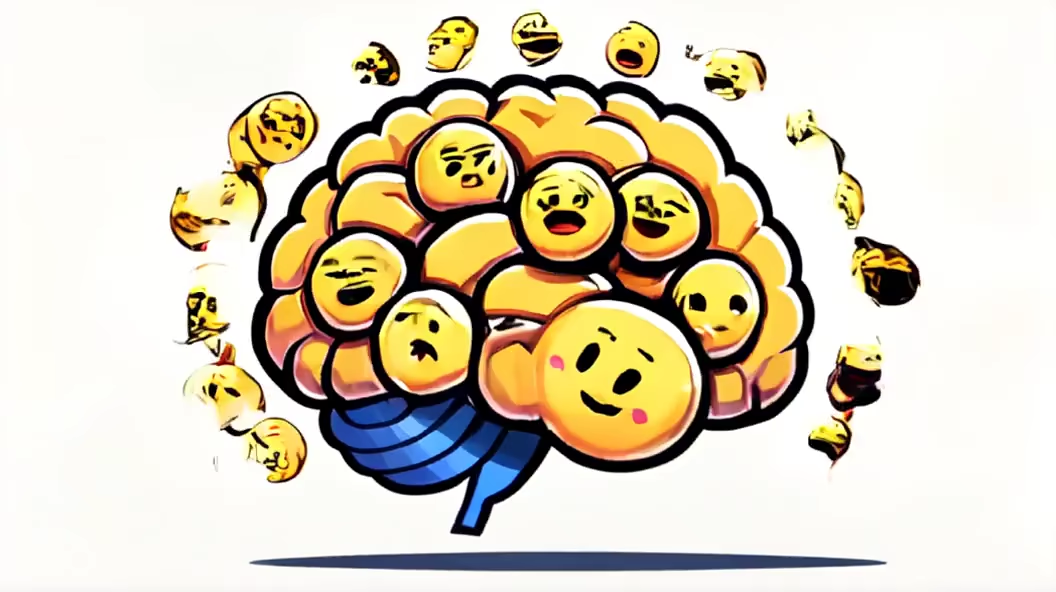

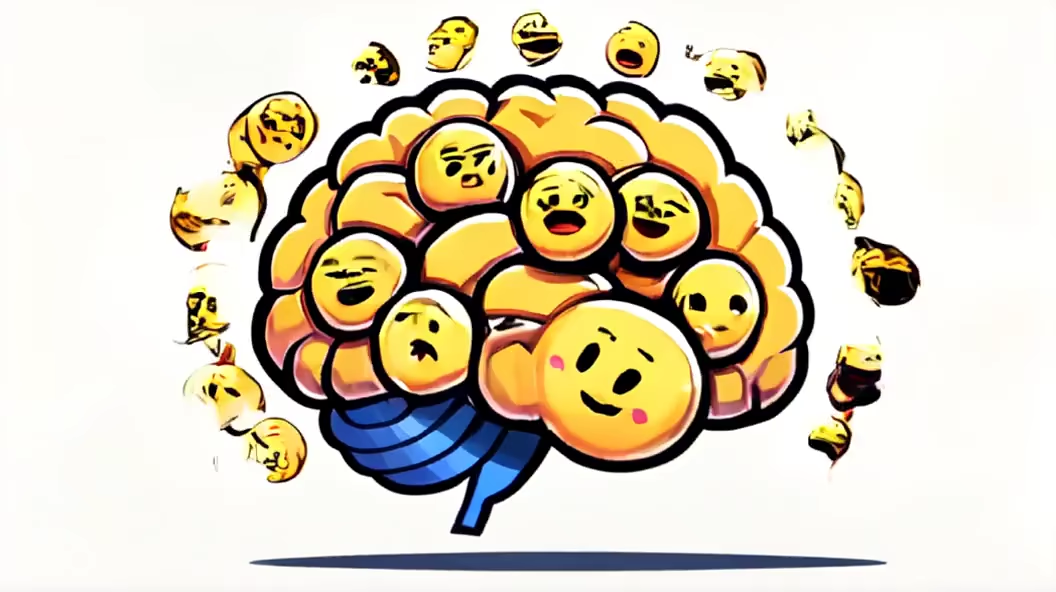
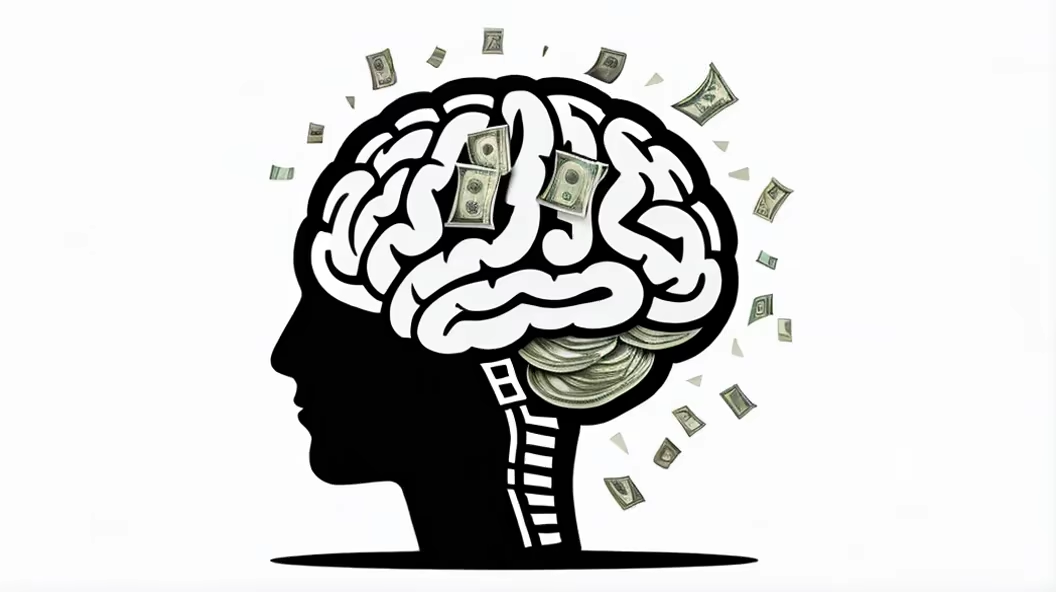
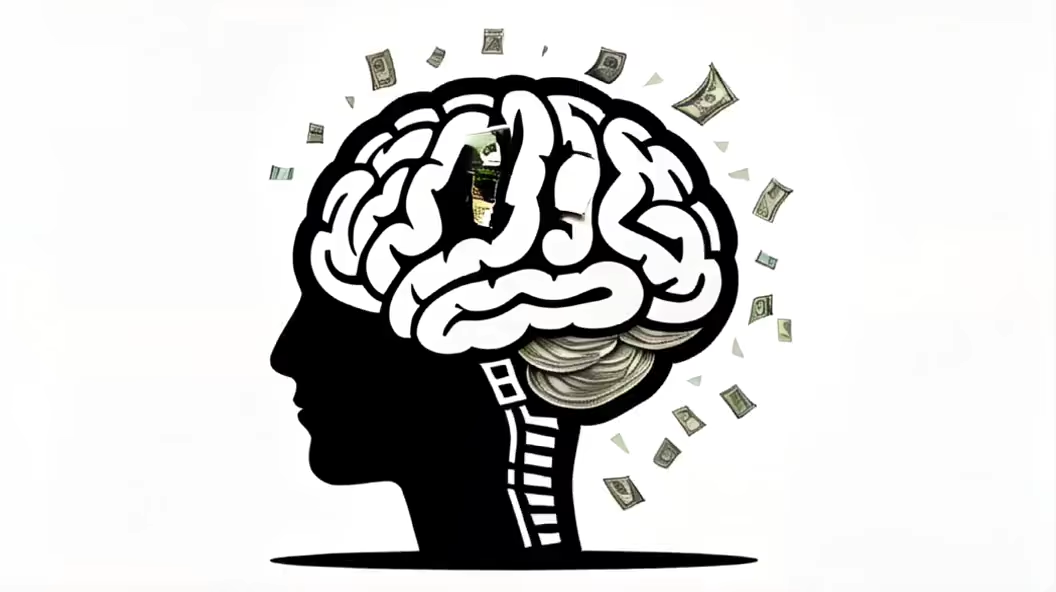
Prompt: Create a logo featuring a profile view of a brain with small boxes inside containing clothing items and documents, 2D
Style: Comic Book


Prompt: 2d character illustration, portrait a soviet general tim curry, portrait of a red alert 3 soviet character
Style: Digital Art


Prompt: An infographic style illustration depicting the developing child and adolescent brain from ages 1 to 8 years old. At age 1 the brain volume is shown as 70% of adult size. At age 2 it is 75% of adult size. At age 3 it is 80% of adult size. At age 4 it is 85% of adult size. At age 5 it is 90% of adult size. At age 6 it is 95% of adult size. At age 8 it has reached adult brain volume. Show this information clearly in an engaging graphic with human brain images growing in size for the different ages.\" This prompts Stable Diffusion to create an infographic that visualizes the key percentages of brain volume growth from ages 1-8, with brain images that increase in size to match the descriptions. The words \"infographic style\" and \"engaging graphic\" ask for an informative yet visually pleasing illustration.






Prompt: Design a logo featuring the profile view of a brain with a subtle human silhouette, incorporating elements such as circuits, documents, and formats
Style: Comic Book




Prompt: A high-fidelity medical x-ray image featuring a sagittal view of a human brain, emphasizing a detailed and accurate portrayal of the brain's convolutions. The x-ray should prominently display a coin embedded in the frontal lobe with utmost clarity. Ensure that the x-ray effect is convincingly strong, completely eliminating any semblance of bony structures in the skull. Pay close attention to the fine details of the brain's convolutions, providing a scientifically accurate representation. Exclude any unnecessary spinal structures from the image. The emphasis should be on achieving a realistic, grayscale x-ray effect that highlights the brain and the embedded coin with precision and clarity.


Prompt: A high-fidelity medical x-ray image featuring a sagittal view of a human brain, emphasizing a detailed and accurate portrayal of the brain's convolutions. The x-ray should prominently display a coin embedded in the frontal lobe with utmost clarity. Ensure that the x-ray effect is convincingly strong, completely eliminating any semblance of bony structures in the skull. Pay close attention to the fine details of the brain's convolutions, providing a scientifically accurate representation. Exclude any unnecessary spinal structures from the image. The emphasis should be on achieving a realistic, grayscale x-ray effect that highlights the brain and the embedded coin with precision and clarity.
Negative: drawing, sketch, painting ,illustration


Prompt: Image6 #picturebook #comic #coherence #continuity Science infographic showing neural proteins entering small monkey brain
Style: Line Art


Prompt: Create a logo featuring a profile view of a brain with small boxes inside containing clothing items and documents
Style: Comic Book


Prompt: Concept 1: The logo features a stylized representation of a human head with circuitry patterns flowing within it. The circuitry symbolizes the integration of AI technology, while the human head represents the app's focus on psychology and emotional support. To add an element of entertainment, small icons depicting different hobbies or activities can be scattered around the head, such as a music note, gaming controller, or movie reel.
Style: Line Art

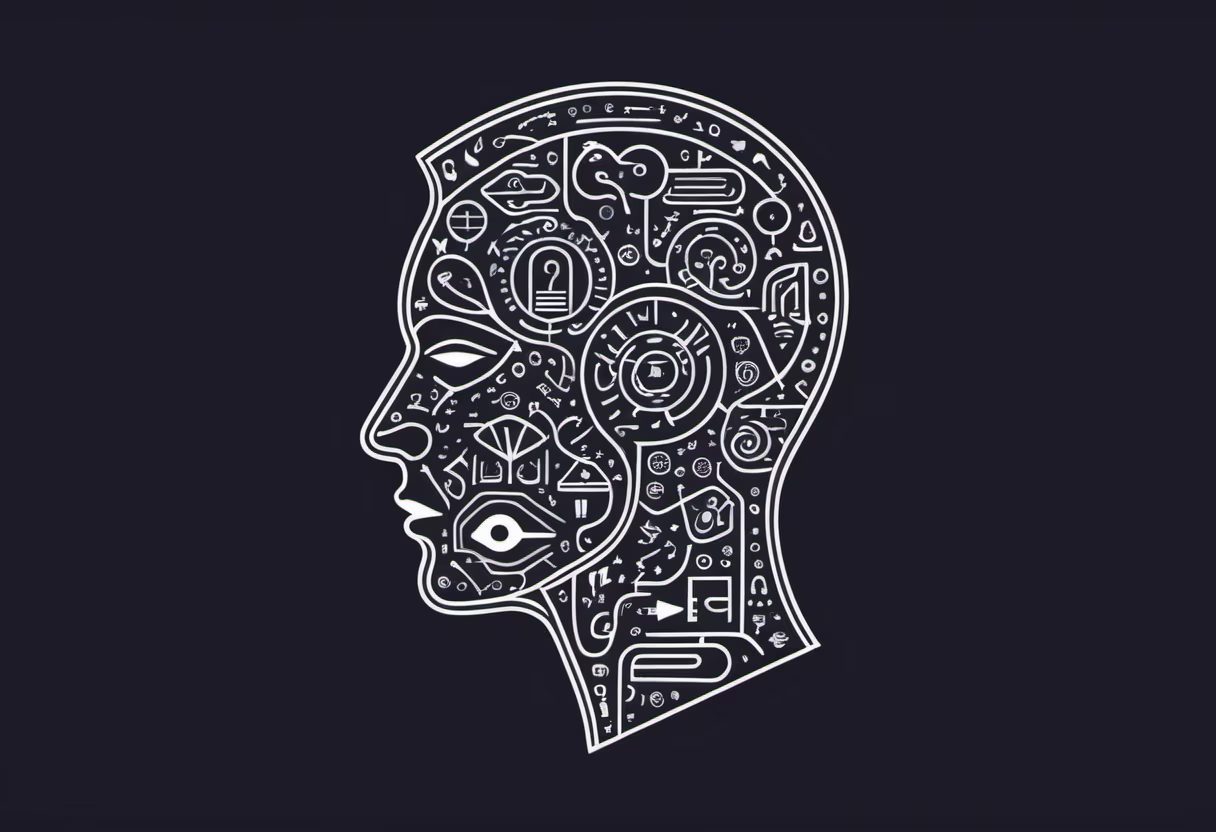
Prompt: The logo consists of a minimalist representation of a brain, with smooth and clean lines. The use of a single color, like dark blue or gray, can convey simplicity and elegance. To incorporate the chat and entertainment elements, small icons representing these elements, such as a music note or movie reel, can be placed around the brain.
Style: Line Art


Prompt: The logo features a bold, single-line representation of a human head in profile view. Within the head, digital circuitry lines form the shape of a brain, symbolizing the AI aspect of the app. The use of a single color, such as black or white, can create a minimalistic effect.
Style: Line Art


Prompt: :human brain, one line arrt, based on the color #03feb2, white background, style: one linee art, format: stills


Prompt: The logo features a minimalistic and geometric representation of a human head in profile view. Within the head, digital circuitry patterns form the shape of a brain, highlighting the AI element. The colors used can be bold and vivid, such as bright yellow or vibrant green. To add a touch of entertainment, small icons representing chat symbols, like message bubbles or speech marks, can be integrated into the design.
Style: Line Art

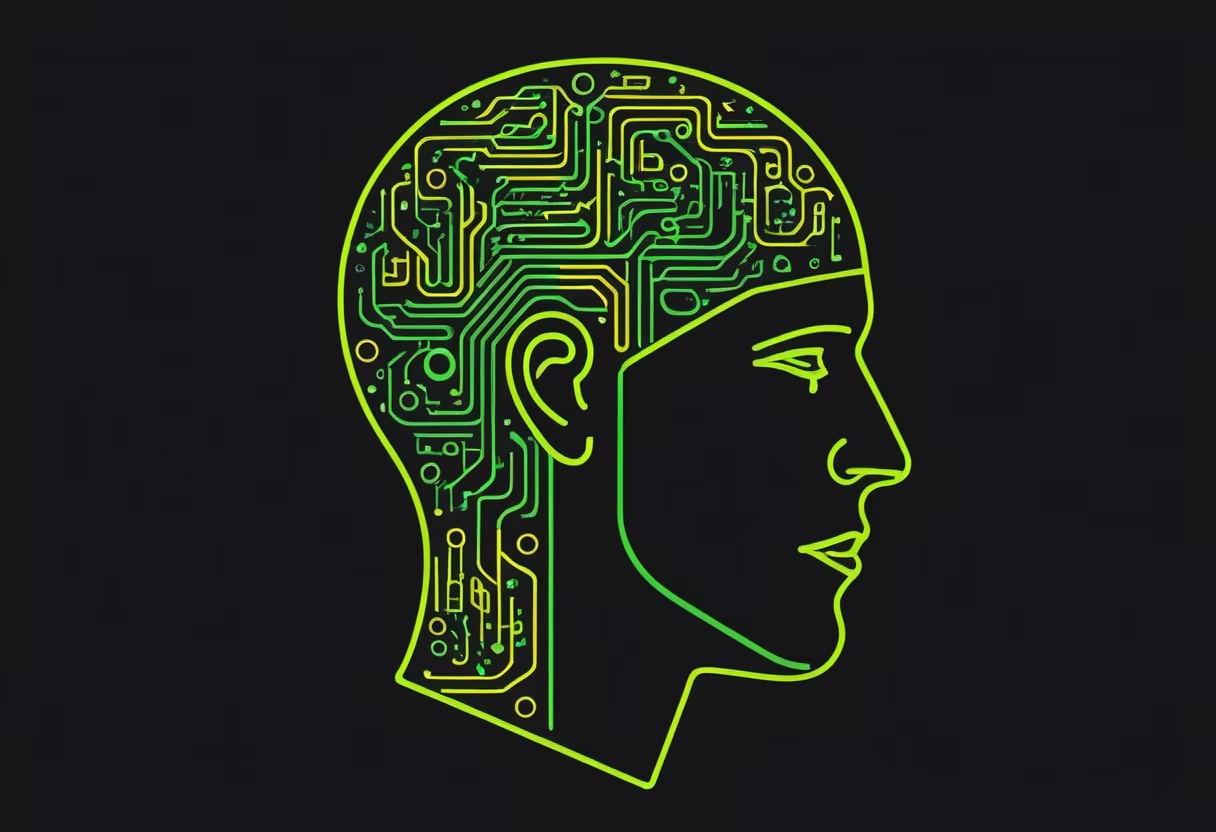
Prompt: The logo showcases a simplified, geometric rendition of a brain with circuitry patterns flowing within it. The use of vibrant and contrasting colors, such as electric blue and neon green, adds visual impact. To incorporate entertainment elements, small icons depicting hobbies or activities, such as a book, popcorn, or soccer ball, can be placed around the brain.
Style: Line Art


Prompt: drawing of a brain with many different colored parts, neuroscience, grey matter and neurons, brain visible, brain, intense knowledge, human brain, brain anatomy, math equations in the background, brains, neural acrylic paint, abstract art representing data, neural networks, high quality picture, visual fidelity and plasticity, mathematical, physics splashes of colors


Prompt: Design a profile view logo featuring a digital brain, with half of its structure made up of circuits and surrounded by documents, 2d
Style: Comic Book


Prompt: present only the bottom half of a human brain. On top of it present data graphs that sit on the half brain. vivid colors, white background


Prompt: Design a profile view logo featuring a digital brain, with half of its structure made up of circuits and surrounded by documents, 2d
Style: Digital Art


Prompt: A map of a human brain, where the blood vessels are roads, the brain regions are parks, and the neurons are houses and buildings. The map has the regular colors and characteristics of a map of a city or country, such as labels, symbols, and borders. The map is in a 9:16 aspect ratio. The map has a realistic style and theme, with detailed textures and fonts. The map is named 'Cerebrum City' and has some landmarks, such as the 'Frontal Lobe Plaza', the 'Hippocampus Lake', and the 'Corpus Callosum Bridge'.
Style: Anime


Prompt: Human head side profile, white stroke. The shape of the brain is a complete pickleball. The pickleball is orange with a white outline. The background color fades from dark gray to white towards the center. Pictures, HD


Prompt: drawing of a brain with many different colored parts, neuroscience, grey matter and neurons, brain visible, brain, intense knowledge, human brain, brain anatomy, math equations in the background, brains, neural acrylic paint, abstract art representing data, neural networks, high quality picture, visual fidelity and plasticity, mathematical, physics splashes of colors
Style: Cinematic


Prompt: an illustration of a brain with a futuristic and technological feel, showcasing the vibrational frequency of brain waves. The brain should appear penetrable, conveying a sense of waves traveling through it, and the brain waves should exhibit a luminous quality, creating a technological vibe


Prompt: an illustration of a brain with a futuristic and technological feel, showcasing the vibrational frequency of brain waves. The brain should appear penetrable, conveying a sense of waves traveling through it, and the brain waves should exhibit a luminous quality, creating a technological vibe




Prompt: an illustration of a brain with a futuristic and technological feel, showcasing the vibrational frequency of brain waves. The brain should appear penetrable, conveying a sense of waves traveling through it, and the brain waves should exhibit a luminous quality, creating a technological vibe




Prompt: an illustration of a brain with a futuristic and technological feel, showcasing the vibrational frequency of brain waves. The brain should appear penetrable, conveying a sense of waves traveling through it, and the brain waves should exhibit a luminous quality, creating a technological vibe


Prompt: Create a profile view logo of a human figure with a brain that incorporates elements such as clothing, circuits, documents, and formats
Style: Comic Book


